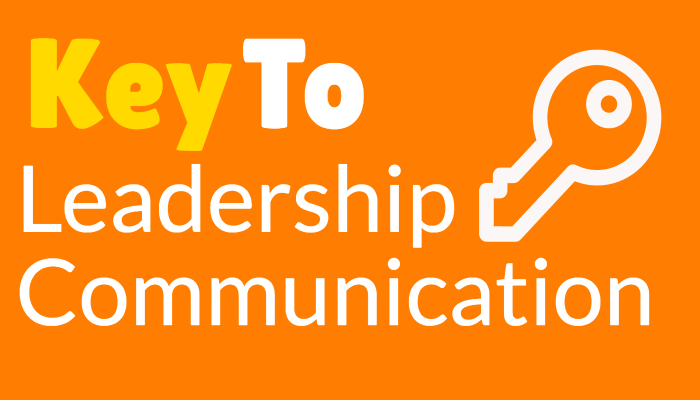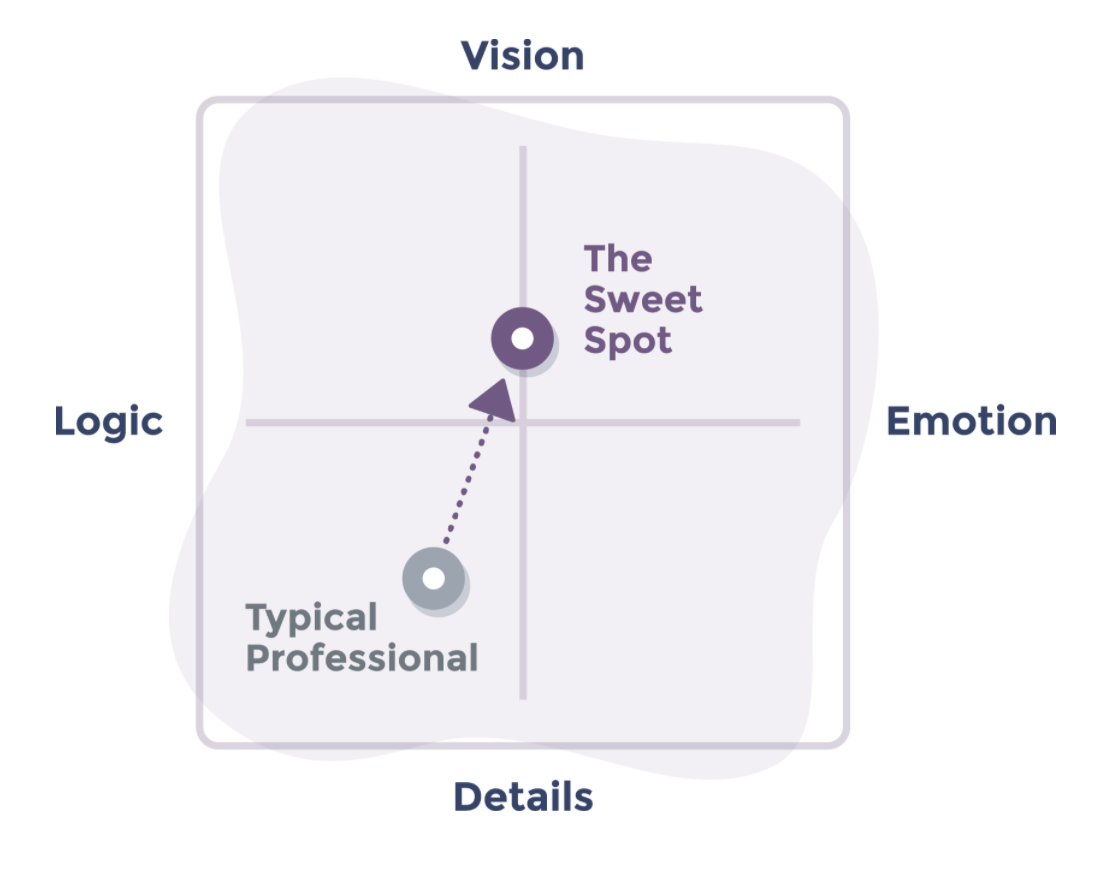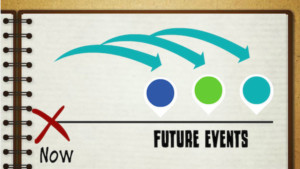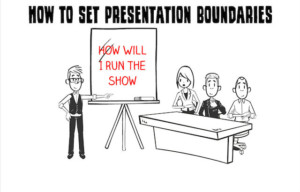The key to leadership communication is flexibility.
Communication flexibility means being able to adjust your communication style to achieve an outcome. An outcome could be getting approval on a new project, getting more organizational resources, getting a promotion, or convincing the executives on a new business direction.
Why is Flexibility in Communication is so Important in Leadership
The reason flexibility is essential because different situations require different approaches. If you just communicate in one style, then you will not get the results you want. Abraham Maslow called this the instrument rule; if all you have is a hammer, then you will treat everything as a nail.
As a leader, you are communicating in different situations, and those situations require different approaches and instruments, and you can’t just use a hammer all the time. For example, presenting at a conference is different than presenting in front of the board, and different than running a meeting and different than having a conversation with your direct reports.
To be flexible with your leadership communication, you need to navigate only two scales. The first scale is the Evidence/Emotion range. The second scale is Detail/Abstract range.
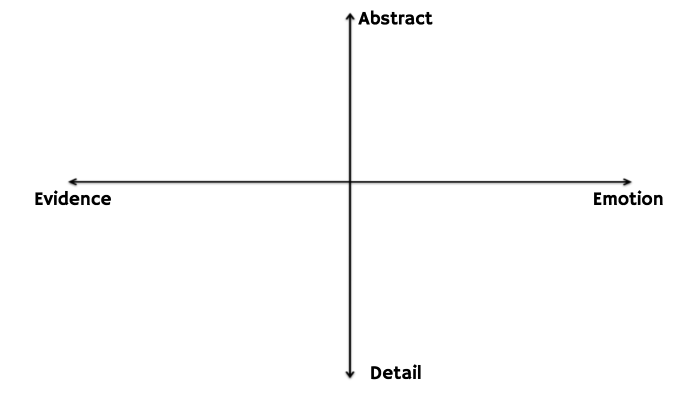

Naturally, your communication fits somewhere on these scales. Which means you have a specific ratio of emotion and logic that you are used to, and a specific ratio of abstract and detail you are comfortable with.
As a result of your natural style, you will be effective in some situations and might not be effective in other circumstances. As a leader, you want to maximize your effectiveness and increase your influence, so it’s important to get comfortable navigating and adjusting your style depending on the situation.
Note: You might be comfortable adjusting your style based on the situation already. That’s great; this model will give you even a deeper understanding of your skill and help you coach others in your organization to become better leaders and better influencers.
To understand where you fit on this chart let’s take the scales one by one and explore them with examples.
So what does it mean to have a communication style that is logical vs. emotional or detail vs. abstract?
Here are the extreme forms of leadership communication styles:
Extreme evidence communication style:
The extreme evidence communication style fits all the way at the left of the evidence and emotion scale. This person will rely only on data, science, logic, to make their case.
 Pros
Pros
Seen as logical and smart
Cons
Viewed as cold and unempathetic
Typical language patterns:
- The numbers show that x is better than y
- We analyzed the data, and it’s clear that product x is better than product y.
Extreme emotional communication style:
The extreme emotional communication style fits all the way on the right side of the evidence and emotion scale. This person will rely only on stories, emotional appeals, emotional outbursts and emotional expressions to make a point.

Pros
Viewed as passionate and compassionate
Cons
Viewed as too “emotional.”
Typical language patterns:
- I feel that x is the way
- My intuition tells me that y is the way
- I hate x
Extreme abstract communication style:
The extreme abstract communication style fits all the way at the top of the abstract/detail scale. The extreme abstract communicator will rely on only big picture and cloud level expressions to make a point.
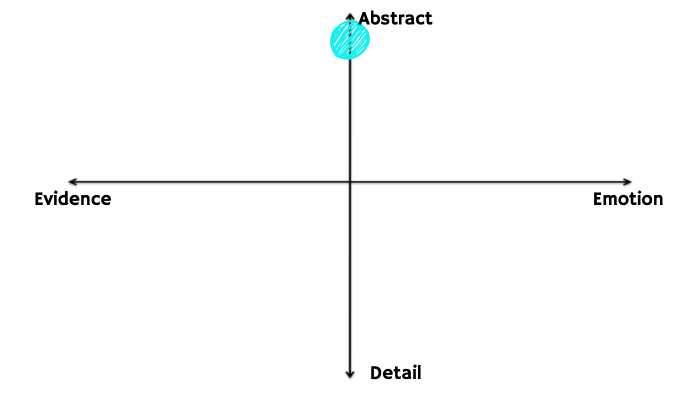
Pros
Viewed as visionary
Cons
Seen as shallow and has no merit
Typical language patterns:
- We want to change the world
- We are the best
- These are the mega trends in the industry.
Extreme detail communication style:
The extreme detail communication style fits all the way at the bottom of the abstract/detail scale. This person will rely only on step by step and nitty-gritty procedures to explain what they are doing.
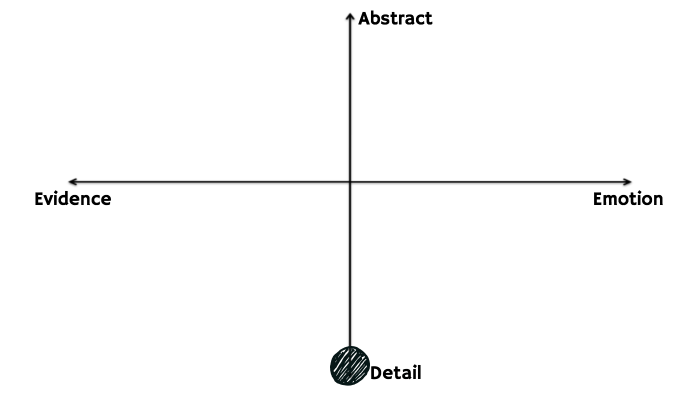
Pros
Viewed as soldier and detail oriented
Cons
Seen as soldier, boring, rambly
Typical language patterns:
- We did x; then we did y, then we did z, then we did w
- The way the hard drive works is…..
Stay away from the extremes:
Obviously, any form of an extreme is not that great for your career unless you are at the top already and you don’t care about advancing further. But, if you are like the 99.9% of professionals who want to advance their career and increase their influence in the organization, then you need to be somewhere else other than the extremes.
What is the best leadership communication style?
The answer depends on the context. That’s why being flexible is the key to great leadership communication. In some context, you might want to lean more on the evidence side of the chart, and some other circumstances maybe lean towards the emotions side of the chart.
A better question is: what is the best communication style for x context? I will give you an example of a setting below and leave other examples for other articles.
What is the best communication style during a team meeting?
The above question is great because it’s specific to a context.
In general to stand out as a leader in team meetings you need to be in the more evidence side of the chart and higher up on the abstraction level.
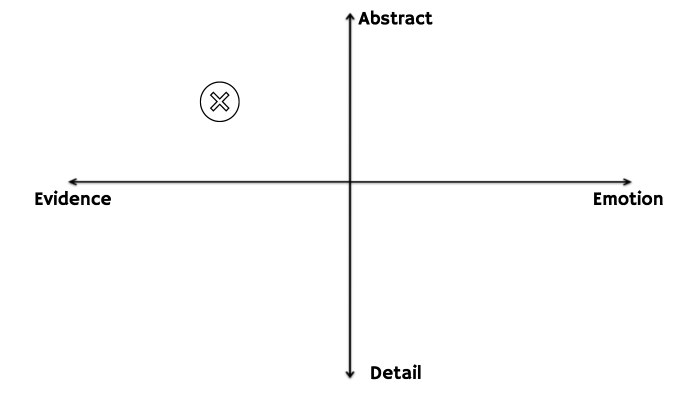
The reason you want to be on the evidence side of the chart is to show that you are level-headed and you are making rational decisions. You don’t want to be extreme evidence-based because you also want to demonstrate some empathy with the team.
The reason you want to be on the abstraction side rather than details is that you want to demonstrate your strategic thinking ability and that you can operate out of the trees. You don’t want to be all the way up in abstraction and give the impression that you are disconnected and out of touch with the real business operation.
If someone asks you “why did you choose the current timeline for your project,” then you need to give them a higher view and explore the strategic analysis while supporting your claims with some logic and evidence.
Also, you want to be flexible enough to dive into the details if needed but always come back always go back to the top left quadrant when you gave some details.
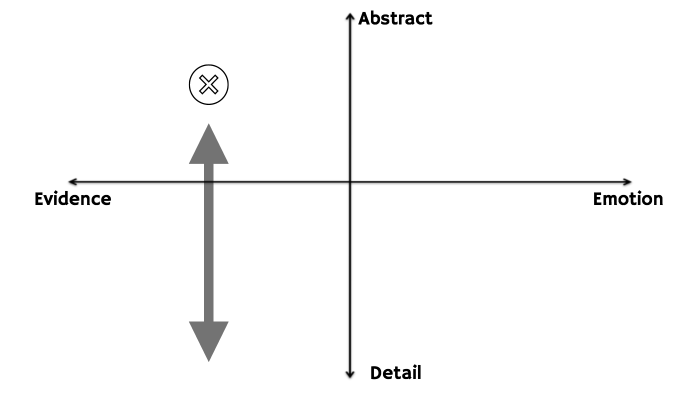
Many smart professionals who know their subjects, unfortunately, get lost in the weeds. They get stuck down at the details level that they forget to climb to give context and a strategic point of view. I say, unfortunately, because these smart professionals get passed on for career advancing opportunities because they get labeled as soldiers and second in command because of their communication style.
As you can see if you stick to this top left quadrant, people will start to view you as a strategic, logical thinker. That’s a description you want for your personal brand when promotion and review time comes.
What about other contexts? Different circumstances require different communication styles. Sometimes, in one presentation you have to use multiple different styles. The key is not to get very rigid in one place, but to be flexible to adapt and change to get the results you want.
Recommendation:
If you are looking for a home base of operation, a place to start from, the top left quadrant is an excellent place to be in for a starting point just like we illustrated for running and participating in team meetings.
Conclusion
That’s why the key to leadership communication is flexibility. It’s always about knowing your outcome and being flexible enough with your communication to achieve it.
